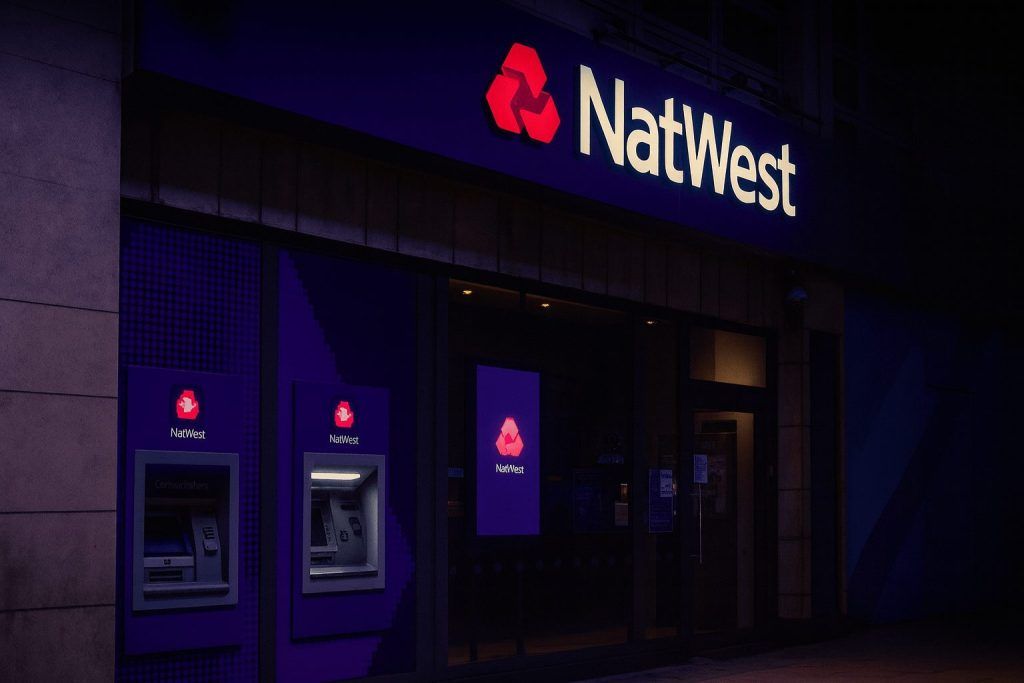Commonwealth Bank of Australia (ASX:CBA) ended Friday’s session slightly weaker, as investors rotated out of bank stocks following a recent bounce and renewed concerns about interest rates, margins, and the broader economic outlook.
Below is a rundown of today’s market action, fresh commentary on CBA’s valuation, and the latest company and housing-market news shaping the investment narrative around Australia’s largest bank.
Today’s CBA share price: mild pullback after recent stabilisation
Based on end-of-day data, Commonwealth Bank shares finished around A$152.85, down roughly 0.9% on the day. The stock traded between about A$152.65 and A$154.10, on relatively light volume (around 0.48 million shares). [1]
That puts CBA:
- Just over 9% above its 52-week low of A$140.21 set in April 2025
- Still well below its 52-week high near A$192 reached in June 2025 [2]
So today wasn’t a crash; it was more of a controlled exhale after a volatile year where CBA first surged to record highs and later fell sharply on concerns over margins and competition, including a near-5% one-day slide earlier in November when management flagged pressure on key lending margins. [3]
Sector backdrop: banks lead the ASX lower
Today’s move in CBA wasn’t happening in a vacuum. Financials broadly led the ASX lower:
- A market wrap noted that Commonwealth Bank and Westpac each lost about 0.5%, while NAB and ANZ also retreated. [4]
Investors are juggling a messy set of inputs:
- Hotter-than-expected inflation in recent months has unsettled rate-cut hopes and re-ignited debate about whether the RBA might actually need to hike again in 2026 rather than simply easing. [5]
- Commentary aimed at retail investors today emphasised being cautious when buying ASX shares ahead of a potential new rate-hiking cycle, highlighting that interest-rate sensitivity remains a critical driver for banks. [6]
In short: the whole sector is tied up in a tug-of-war between margin pressure, credit quality risks if rates go higher again, and ongoing demand for housing finance.
Fresh valuation chatter: are CBA shares still too expensive?
CBA is one of the most heavily analysed pieces of financial metal on the ASX, and today saw more valuation work land:
- A new Rask Media piece notes CBA is trading “around A$154” and walks through two valuation methods (typically discounted cash flow and relative valuation) to stress-test whether the current price makes sense. [7]
- A separate analysis from Kalkine Media, also published today, focuses on “whether CBA shares are right for your portfolio”, again emphasising valuation and income characteristics. [8]
Across these and other recent notes, a few themes repeat:
- Premium valuation
- CBA trades on a higher price-to-earnings (P/E) multiple than its big-four peers, largely because of its dominant market position, perceived lower risk, and strong brand.
- Broker and retail commentary over the past fortnight has repeatedly referred to “valuation concerns” and “overvaluation in the medium term” after CBA’s run-up earlier in the year. [9]
- Dividend and yield support
- The trailing dividend yield is in the low-to-mid 3% range (around 3.1–3.4%), fully franked, supported by a A$2.25 interim and A$2.60 final dividend in FY25. [10]
- For income-oriented investors, that combination of yield plus franking credits remains a core part of the CBA story.
- Mixed technical signals
- Short-term technical analysis today points to support around the low-A$150s, with a “pivot bottom” buy signal indicated from mid-November, but also a lingering sell signal on longer-term momentum (MACD), underscoring that the trend is not one-way. [11]
So the consensus vibe is: great business, decent income, but still not obviously “cheap” after the big post-2023 rally.
Analyst and broker sentiment: rotation within the big four
A new article this week on how broker Morgans rates the big four ASX 200 bank shares highlights a rotation within the sector: some investors are trimming outperformers like CBA and looking more closely at peers that may offer better value. [12]
Separately, other commentators have suggested alternative financial stocks that could be more attractive on a valuation basis than CBA right now, pointing to smaller lenders or diversified financials as potential beneficiaries if investors cool on the bank giant’s premium pricing. [13]
The upshot for today: sentiment is not hostile, but it is cautious. Investors appear less willing to pay any price for “quality” now that:
- Margins are under observable pressure, and
- Macroeconomic uncertainty around inflation and 2026 interest-rate settings is rising again.
Company and macro news today: housing, wealth transfer, and demand for credit
Two fresh pieces of CommBank-authored news today feed into the longer-term narrative for CBA’s loan book and earnings:
- Help to Buy scheme launch with CommBank participation
- CommBank highlighted its participation in the Australian Government’s Help to Buy Scheme, designed to help eligible buyers bridge the gap between their borrowing capacity and dwelling prices. [14]
- For CBA, schemes like this can support ongoing demand for mortgages, even if affordability is stretched and interest-rate uncertainty is high.
- Intergenerational wealth transfer and property demand
- A CBA newsroom article released today explores how an estimated A$3.5 trillion in Baby Boomer wealth is expected to help fund Millennials’ “forever homes”, implying a sustained long-run tailwind for the property market. [15]
- For a bank whose fortunes are tightly linked to Australia’s housing market, the idea that the next generation will still be buying (with help from Mum & Dad, and Mum & Dad’s super) is strategically important.
These items don’t move the share price minute-to-minute, but they strengthen the long-term housing and credit demand story that underpins CBA’s earnings.
How today fits into CBA’s 2025 story
If you zoom out a little, today’s modest fall is just another frame in a very jumpy 2025 film:
- Record highs: In June, CBA hit around A$192, helped by strong FY25 profit expectations and a global rally in financials. [16]
- Big correction: By late October and early November, hot inflation data and renewed rate jitters knocked financials back, and CBA suffered several heavy down-days. [17]
- Results and dividends: The FY25 profit announcement in August flagged a A$10-plus billion annual profit, ongoing capital strength, and another fully-franked dividend, underpinning the view that CBA remains fundamentally solid. [18]
Today’s pricing around the low-A$150s effectively sits in the middle of this range: well below the euphoric highs, but not yet close to the panic lows.
Key takeaways for investors watching CBA today
To boil down today’s newsflow:
- Price action
- CBA closed around A$152.85, off about 0.9%, as part of a broader pullback in financials where big banks led the ASX lower. [19]
- Valuation
- Fresh articles today are once again stressing that CBA remains richly valued relative to peers, even after the correction, with income support from a dividend yield in the low-3% zone and fully-franked payouts. [20]
- Macro and housing
- Commentary around possible RBA hikes in 2026, stubborn inflation, and sector rotation is tempering enthusiasm. [21]
- At the same time, CBA’s own newsroom is leaning into a structural housing-demand narrative via the Help to Buy scheme and intergenerational wealth transfer research, reinforcing the long-run growth case for its home-loan franchise. [22]
- Sentiment and positioning
- Recent broker commentary suggests some investors are rotating away from CBA into other financials or sectors where valuations look less stretched, while long-term holders continue to focus on dividends and balance-sheet strength. [23]
Put bluntly: today’s move is more about nerves than disaster. The market is trying to reconcile a high-quality franchise with high expectations, wobbly macro conditions, and a valuation that still assumes CBA will keep threading the needle on margins and credit quality.
Final word: what today’s CBA move signals
From an information perspective, 28 November 2025 adds another data point to a familiar pattern:
- When inflation surprises and rate expectations shift, CBA trades like a high-beta macro instrument for the Australian economy.
- When housing policy and demographic tailwinds are in the headlines, CBA looks more like a long-term cash-machine with structural demand behind it.
Today delivered a little of both: a modest price dip alongside new reminders that the long-term housing story is still very much alive.
References
1. www.investing.com, 2. markets.ft.com, 3. www.reuters.com, 4. www.indopremier.com, 5. www.abc.net.au, 6. www.fool.com.au, 7. www.raskmedia.com.au, 8. kalkinemedia.com, 9. www.marketindex.com.au, 10. www.digrin.com, 11. stockinvest.us, 12. www.fool.com.au, 13. www.fool.com.au, 14. www.commbank.com.au, 15. www.commbank.com.au, 16. www.fool.com.au, 17. www.abc.net.au, 18. www.commbank.com.au, 19. www.investing.com, 20. www.raskmedia.com.au, 21. www.fool.com.au, 22. www.commbank.com.au, 23. www.fool.com.au









